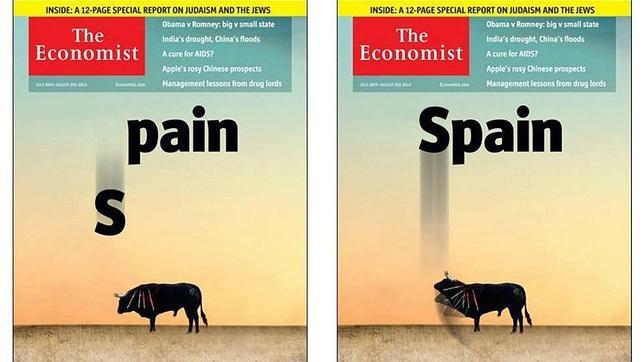Spain’s economic recovery, with output expected to grow by more than 3% this year and unemployment falling steadily, is generating a lot of attention across the Eurozone. The successful completion of the financial sector restructuring that followed the banking bail-out in 2012, the strong recovery of exports and the widespread narrative according to which Spain has done its homework and Spaniards are ‘the Germans of the South’ has made Spain the poster boy of reforms in Europe.
“(…) a balanced assessment has to conclude that Spain’s recent economic performance has as much light as shade.”
However, not everyone shares such an optimistic view. In a recent policy paper, Simon Tilford, deputy Director of the Centre for European Reform, a London-based think tank, argues that the recovery is not a result of austerity and reforms and that the economy’s outlook is cloudier than the dominant narrative suggests. High levels of debt and unemployment, deflationary risks, stubbornly low productivity and dangerous demographics all make the recovery weak. Moreover, argues Tilford, when the next recession hits Europe, Spain will not be well prepared to face it.
These arguments have some merit. However, they should be taken with a grain of salt. It is true that there are exceptionally good temporary exogenous factors that fuel Spain’s recovery: low oil prices, a cheap euro, low borrowing costs and a relaxation of austerity have all increased output growth and reduced unemployment. And some of these tail-wind effects will certainly reverse sooner or later. Moreover, Spain suffers from other economic weaknesses that Tilford does not mention: inequality has increased dramatically during the recession, the black market economy accounts for around 20% of GDP and long-term and structural unemployment are among the highest in Europe.
Nevertheless, it is misleading to claim that Spain is not on the right path to recovery. Difficult as it is to overcome the deepest crisis in decades while being a member of a poorly functioning monetary union, a balanced assessment has to conclude that Spain’s recent economic performance has as much light as shade.
“The big question, however, is the extent to which Spain’s political leaders will be capable of implementing the additional reforms that are needed.”
It is true that the list of necessary reforms is long. Not only for Spain, but for most of Europe’s sclerotic economies. However, since May 2010, when Spain started to restrain its public spending and implement structural changes under European pressure, the list of achievements has been long. Some reforms have been deep. The banking sector has been recapitalised and credit is flowing again; (incomplete) labour market reforms have increased the economy’s capacity to create jobs once growth resumes; and a substantial pension reform that increases the long-term sustainability of public finances has been approved. Other structural policies have been less intense, but still useful, such as the reforms in the tax and education systems, the single market law and the initiatives aimed at liberalising certain services and improving public-sector efficiency. All these changes, combined with a strong internal devaluation driven by a substantial reduction in unit labour costs, budgetary policies to ensure fiscal sustainability, positive external shocks and reforms at the European level (particularly Mario Draghi’s ‘Whatever it takes’) are behind the current recovery.
Simple facts such as the swift reversal of the current account (from a deficit of over 10% in 2007 to a surplus in 2013), the pace of deleveraging (with a reduction of more than €429 billion in the debt stock of households and firms), higher consumer confidence, a slight recovery in real-estate prices, a significant diversification in export destinations outside the Eurozone and the creation of over 600,000 jobs in 2015 alone should not be underestimated. It is true that were the positive external factors to reverse, the strength of the recovery would undoubtedly slow down. However, oil prices can be expected to remain low in the foreseeable future, the euro should continue to fall against the US dollar once the Fed starts to raise interest rates and very cheap financing costs will prevail as long as QE is active, which means that the Spanish economy will continue to benefit from positive tail winds for some time.
The big question, however, is the extent to which Spain’s political leaders will be capable of implementing the additional reforms that are needed to sustain strong growth once the favourable external factors change. The country still needs to improve its human capital and R&D, increase competition in the goods and services markets, end the duality of the labour market, reduce energy costs, make the tax system more efficient and effective and capable of redistributing income and reduce inequality, implement thorough changes in the public administration (including a resolution to the Catalan question) and adopt measures to increase institutional quality and reduce corruption. Without them, Spain will not be able to transform its economic structure and aspire to succeed under economic globalisation.
Until recently it was argued that neither conservatives nor social-democrats could tackle these profound changes. However, given that Ciudadanos, the new centrist liberal party, will be the kingmaker of the government to emerge after the elections on 20 December, the prospects for reform are actually quite bright.
Spain will also need the Eurozone to continue improving its governance structures to ensure that it does not function merely as a fixed exchange-rate regime that penalises peripheral countries. In any case, there are good reasons to see the glass half full and not half empty when assessing the Spanish economy.



